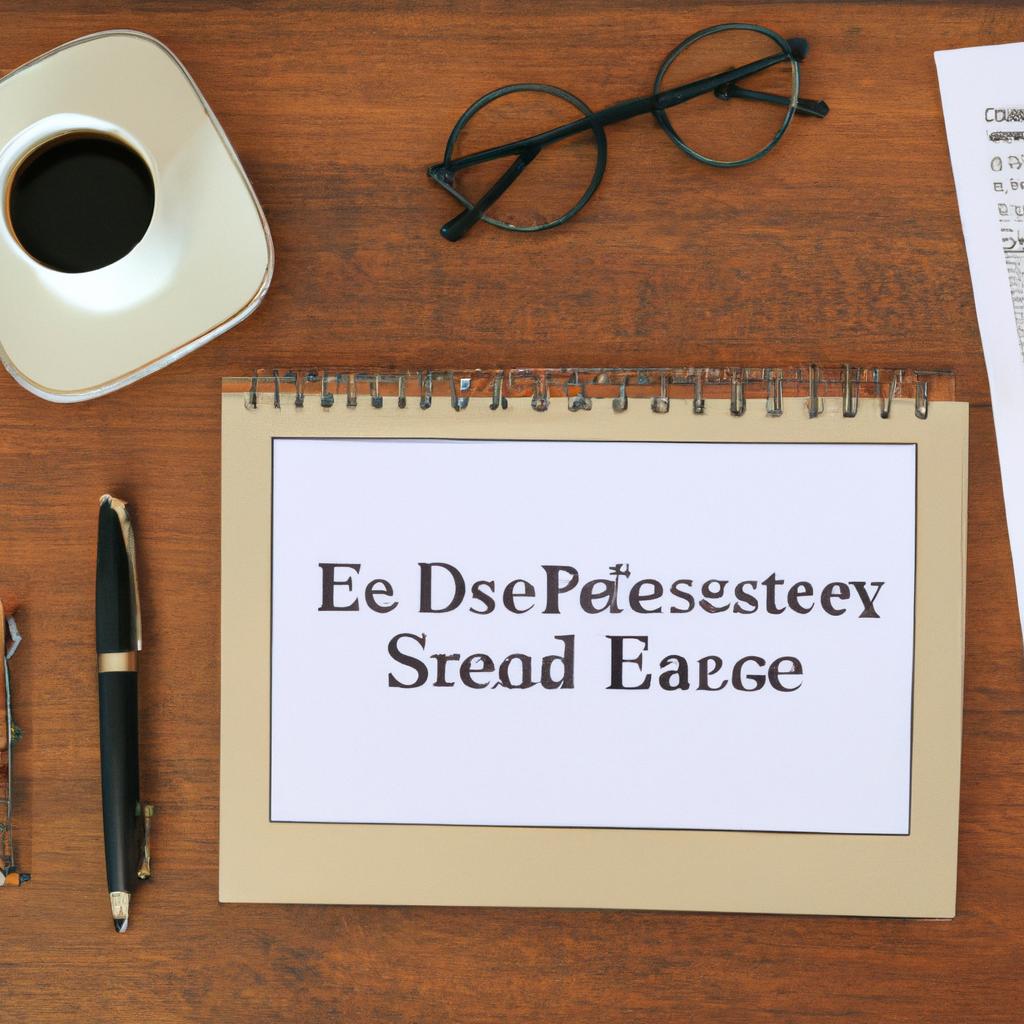Losing a loved one is always a difficult and emotional time. It can be particularly overwhelming when faced with the legal process of navigating the deceased individual’s estate, including the question of how to change a deed after death. At Morgan Legal Group, we understand the complexities and importance of ensuring proper documentation and transfer of property ownership. As experienced attorneys in estate planning and probate law, we are here to guide you through the necessary steps to amend a deed posthumously. Let us alleviate the burden and provide clarity in this crucial aspect of estate administration.
– Modifying Deeds Postmortem: Understanding the Legal Process
When it comes to modifying deeds postmortem, it is crucial to understand the legal process involved. Changing a deed after someone has passed away can be a complex and sensitive matter that requires careful navigation. Here at Morgan Legal Group in New York City, we specialize in estate planning, probate, and other related legal services to assist you in this process.
One of the key steps in modifying a deed after death is determining the appropriate legal route to take. This may involve probating the will, establishing a trust, or seeking court approval for the modification. It is important to consult with experienced legal professionals who can guide you through the necessary steps and ensure that the process is carried out correctly. By working with our team at Morgan Legal Group, you can have peace of mind knowing that your postmortem deed modifications are being handled with care and expertise.

– Key Considerations When Updating Deeds After the Property Owner’s Passing
When a property owner passes away, it is essential to update the deeds to reflect the new ownership. There are several key considerations to keep in mind during this process:
- Obtain a death certificate: Before making any changes to the deeds, it is crucial to obtain a certified copy of the property owner’s death certificate. This document will be required to prove the individual’s passing.
- Determine the type of ownership: Depending on how the property was owned, the process of updating the deeds may vary. Common types of ownership include sole ownership, joint tenancy, tenancy in common, and community property.
| Ownership Type | Definition |
|---|---|
| Sole Ownership | Property owned by one individual. |
| Joint Tenancy | Property owned by two or more individuals with right of survivorship. |
| Tenancy in Common | Property owned by two or more individuals with no right of survivorship. |
Updating deeds after a property owner’s passing can be a complex process. It is recommended to seek the guidance of an experienced estate planning attorney, such as the professionals at Morgan Legal Group in New York City. Our team specializes in estate planning, probate, Wills, and trusts, ensuring that the transfer of property is handled accurately and efficiently.

– Expert Recommendations for Successfully Changing a Deed Following Death
When a loved one passes away, it can be a challenging time for the surviving family members. One of the tasks that may need to be undertaken is changing the deed to property owned by the deceased. This process can be complex and may involve various legal requirements. To successfully change a deed following death, it is crucial to seek guidance from legal experts who specialize in estate planning and probate law.
At Morgan Legal Group in New York City, our team of experienced attorneys can provide expert recommendations on how to navigate the process of changing a deed after death. Some key steps to consider include:
- Consulting with an estate planning attorney: A legal professional can guide you through the necessary steps to transfer ownership of the property.
- Obtaining a certified copy of the death certificate: This document is typically required to update the deed to reflect the change in ownership.
- Reviewing the terms of the deceased’s Will or trust: The Will or trust document may contain specific instructions on how the property should be transferred to heirs or beneficiaries.

– Navigating the Complexities of Deed Amendment in Estate Planning
Changing a deed after the death of a loved one can be a complex and daunting process. It is essential to navigate the legal intricacies of deed amendment in estate planning carefully to ensure that the property is transferred smoothly and accurately. When it comes to making changes to a deed after death, there are several important factors to consider:
- Identifying the proper legal documents required for deed amendment
- Understanding the different types of deed changes that can be made
- Determining the appropriate legal steps to take based on the specific circumstances of the property transfer
In order to effectively change a deed after death, it is crucial to work with an experienced estate planning attorney who can guide you through the process and ensure that all legal requirements are met. By seeking professional legal assistance, you can navigate the complexities of deed amendment with confidence and peace of mind, knowing that your loved one’s property is being transferred in accordance with their wishes and the law. Trust Morgan Legal Group to provide expert guidance and support in all aspects of estate planning and deed amendment.
Q&A
Q: What is a deed and why would it need to be changed after death?
A: A deed is a legal document that transfers ownership of real property. It may need to be changed after death if the deceased individual’s property needs to be transferred to another person.
Q: How can I change a deed after someone has passed away?
A: To change a deed after death, you’ll need to go through the probate process to transfer the property to the deceased individual’s heirs or beneficiaries.
Q: What steps do I need to take to change a deed after death?
A: First, you’ll need to obtain a copy of the deceased individual’s will, if one exists. Then, you’ll need to determine who the rightful heirs or beneficiaries are. Finally, you’ll need to file the necessary paperwork to transfer the property to the new owners.
Q: Can I change a deed without going through probate?
A: In some cases, it may be possible to change a deed without going through probate, such as if the property is held in joint tenancy with right of survivorship or if the deceased individual set up a living trust.
Q: Are there any potential complications or challenges when changing a deed after death?
A: Yes, there can be complications or challenges when changing a deed after death, such as disputes among heirs or beneficiaries, unclear property titles, or issues with the deceased individual’s creditors.
Q: How long does it typically take to change a deed after death?
A: The timeline for changing a deed after death can vary depending on the complexity of the estate and any potential legal challenges. It could take several months to a year or longer to complete the process.
To Conclude
In conclusion, navigating the process of changing a deed after death can be complex and daunting, but with the right guidance and legal support, it is entirely possible to transfer property ownership smoothly. Remember to seek advice from professionals and stay organized throughout the process to ensure a successful outcome. By taking the necessary steps and following the proper protocols, you can honor your loved one’s wishes and secure your own peace of mind. Good luck on your journey towards closing this chapter and opening a new one.
 How Do I Change a Deed After Death: Steps, Tips, and Considerations
How Do I Change a Deed After Death: Steps, Tips, and Considerations
The passing of a loved one is never easy. Amidst the grieving and emotional turmoil, there are also practical matters to attend to, such as the transfer of ownership of their property. If you have inherited a property or are interested in changing the deed of a loved one who has passed away, this article will guide you through the necessary steps, tips, and considerations.
What is a Deed?
Before we dive into the process of changing a deed after death, it is essential to understand what a deed is. A deed is a legal document that establishes ownership rights to a property. It includes information such as the names of the current and previous owners, a legal description of the property, and any liens or encumbrances. There are various types of deeds, but the most common one used for real estate is a warranty deed, which guarantees that the seller has the legal right to transfer ownership and that the property is free from any liens.
How is a Deed Transferred Upon Death?
Typically, when a property owner passes away, their estate will go through a probate process. Probate is a legal process that validates a will, if there is one, and oversees the distribution of the deceased’s assets. During probate, the court will appoint an executor or personal representative to manage the estate. This person will be responsible for identifying and gathering all of the deceased’s assets, including their property, paying any remaining debts, and distributing the remaining assets to the beneficiaries.
If the deceased had a will, the transfer of property will be carried out according to the instructions in the will. If there is no will or if the will is deemed invalid, the property will be distributed according to state laws of intestate succession. Once the court has assigned ownership of the property, the executor or personal representative can initiate the process of changing the deed.
How Do I Change a Deed After Death?
The process of changing a deed after death may vary depending on state laws and the specific circumstances of the deceased’s estate. However, the following are the general steps you can expect to take.
1. Identify the executor or personal representative of the estate – As mentioned earlier, the court will appoint an executor or personal representative to manage the deceased’s estate. This person will have the legal authority to initiate the transfer of ownership of any property.
2. Gather necessary documents – To change the deed, you will need to obtain a certified copy of the death certificate, a copy of the will (if there is one), and any probate court orders.
3. File a new deed – The executor or personal representative can file a new deed with the county clerk’s office where the property is located. The new deed should include the name of the deceased, the name of the new owner(s), and any relevant property information. It should also have the necessary legal language, such as a warranty of title.
4. Pay any transfer fees – Depending on your state and county, there may be transfer fees or taxes associated with changing the deed. These fees must be paid to the county clerk’s office at the time of filing the new deed.
5. Record the new deed – Once the new deed is filed and fees are paid, it must be recorded with the county recorder’s office. This step makes the transfer official and protects the new owner(s) from any potential legal disputes in the future.
Additional Considerations and Tips
– It is generally recommended to seek legal and/or financial advice before changing a deed after death. The process can be complex, and an expert can help ensure that everything is done correctly and any potential issues are addressed.
– If you are the new owner of the property, you may also want to consider purchasing title insurance. This policy protects the new owner from any potential legal claims or disputes regarding the property’s ownership.
– If you have inherited the property, you may have to pay inheritance taxes. The amount of tax owed will depend on the state where the property is located and the value of the property.
– If the property has a mortgage, the new owner(s) will need to continue making mortgage payments. However, they may also have the option to refinance the loan in their name(s) and potentially receive better interest rates.
– In some cases, the previous owner may have had a living trust or joint tenancy with right of survivorship in place. In these situations, the property may be transferred to the new owner(s) without going through probate. If you are unsure about whether such arrangements exist, it is best to consult an attorney or financial advisor.
Benefits and Practical Tips
Changing a deed after death can bring about several benefits for the new owner(s). These include:
– The legal security of ownership
– The potential to refinance for better mortgage terms
– The opportunity to sell or rent out the property for profit
To ensure a smooth and successful transfer of ownership, consider the following practical tips:
– Stay organized and keep all necessary documents in one place to simplify the process.
– Be prepared for potential challenges or legal disputes, and seek professional advice if needed.
– Communicate openly and clearly with all parties involved to prevent any misunderstandings or complications.
In Conclusion
Dealing with the necessary legal matters after a loved one’s passing can be overwhelming and emotionally taxing. However, by understanding the process and seeking professional advice, you can successfully navigate the steps to change a deed after death. Remember to stay organized, communicate effectively, and seek help when needed.


